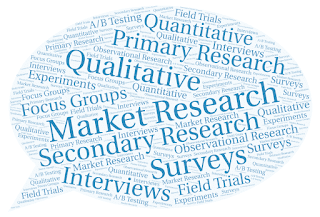The basic components involved in the research process.
The basic components involved in the research process.
Scientific research involves a systematic process that focuses on being objective and gathering a multitude of information for analysis so that the researcher can come to a conclusion. This process is used in all research and evaluation projects, regardless of the research method.
These professionals need to understand the eight steps of the research process as they apply to conduct a study.
Step 1: Identify the Problem
The first step in the process is to identify a problem or develop a research question. The research problem may be something the agency identifies as a problem, some knowledge or information that is needed by the agency, or the desire to identify a recreation trend nationally. In the example in table 2.4, the problem that the agency has identified is childhood obesity, which is a local problem and concern within the community. This serves as the focus of the study.
Step 2: Review the Literature
Now that the problem has been identified, the researcher must learn more about the topic under investigation. To do this, the researcher must review the literature related to the research problem. This step provides foundational knowledge about the problem area. The review of literature also educates the researcher about what studies have been conducted in the past, how these studies were conducted, and the conclusions in the problem area.
Step 3: Clarify the Problem
Many times the initial problem identified in the first step of the process is too large or broad in scope. In step 3 of the process, the researcher clarifies the problem and narrows the scope of the study. This can only be done after the literature has been reviewed. The knowledge gained through the review of literature guides the researcher in clarifying and narrowing the research project. In the example, the programmer has identified childhood obesity as the problem and the purpose of the study.
Step 4: Clearly Define Terms and Concepts
Terms and concepts are words or phrases used in the purpose statement of the study or the description of the study. These items need to be specifically defined as they apply to the study. Terms or concepts often have different definitions depending on who is reading the study. To minimize confusion about what the terms and phrases mean, the researcher must specifically define them for the study. In the obesity study, the concept of “individual's health” can be defined in hundreds of ways, such as physical, mental, emotional, or spiritual health.
Step 5: Define the Population
Research projects can focus on a specific group of people, facilities, park development, employee evaluations, programs, financial status, marketing efforts, or the integration of technology into the operations. For example, if a researcher wants to examine a specific group of people in the community, the study could examine a specific age group, males or females, people living in a specific geographic area, or a specific ethnic group.
Step 6: Develop the Instrumentation Plan
The plan for the study is referred to as the instrumentation plan. The instrumentation plan serves as the road map for the entire study, specifying who will participate in the study; how, when, and where data will be collected; and the content of the program. This plan is composed of numerous decisions and considerations that are addressed in chapter 8 of this text. In the obesity study, the researcher has decided to have the children participate in a walking program for six months.
Step 7: Collect Data
Once the instrumentation plan is completed, the actual study begins with the collection of data. The collection of data is a critical step in providing the information needed to answer the research question. Every study includes the collection of some type of data—whether it is from the literature or from subjects—to answer the research question. Data can be collected in the form of words on a survey, with a questionnaire, through observations, or from the literature.
Step 8: Analyze the Data
All the time, effort, and resources dedicated to steps 1 through 7 of the research process culminate in this final step. The researcher finally has data to analyze so that the research question can be answered. In the instrumentation plan, the researcher specified how the data will be analyzed. The researcher now analyzes the data according to the plan. The results of this analysis are then reviewed and summarized in a manner directly related to the research questions.
Conducting studies using the eight steps of the scientific research process requires you to dedicate time and effort to the planning process. You cannot conduct a study using the scientific research process when time is limited or the study is done at the last minute. Researchers who do this conduct studies that result in either false conclusions or conclusions that are not of any value to the organization.









Comments
Post a Comment